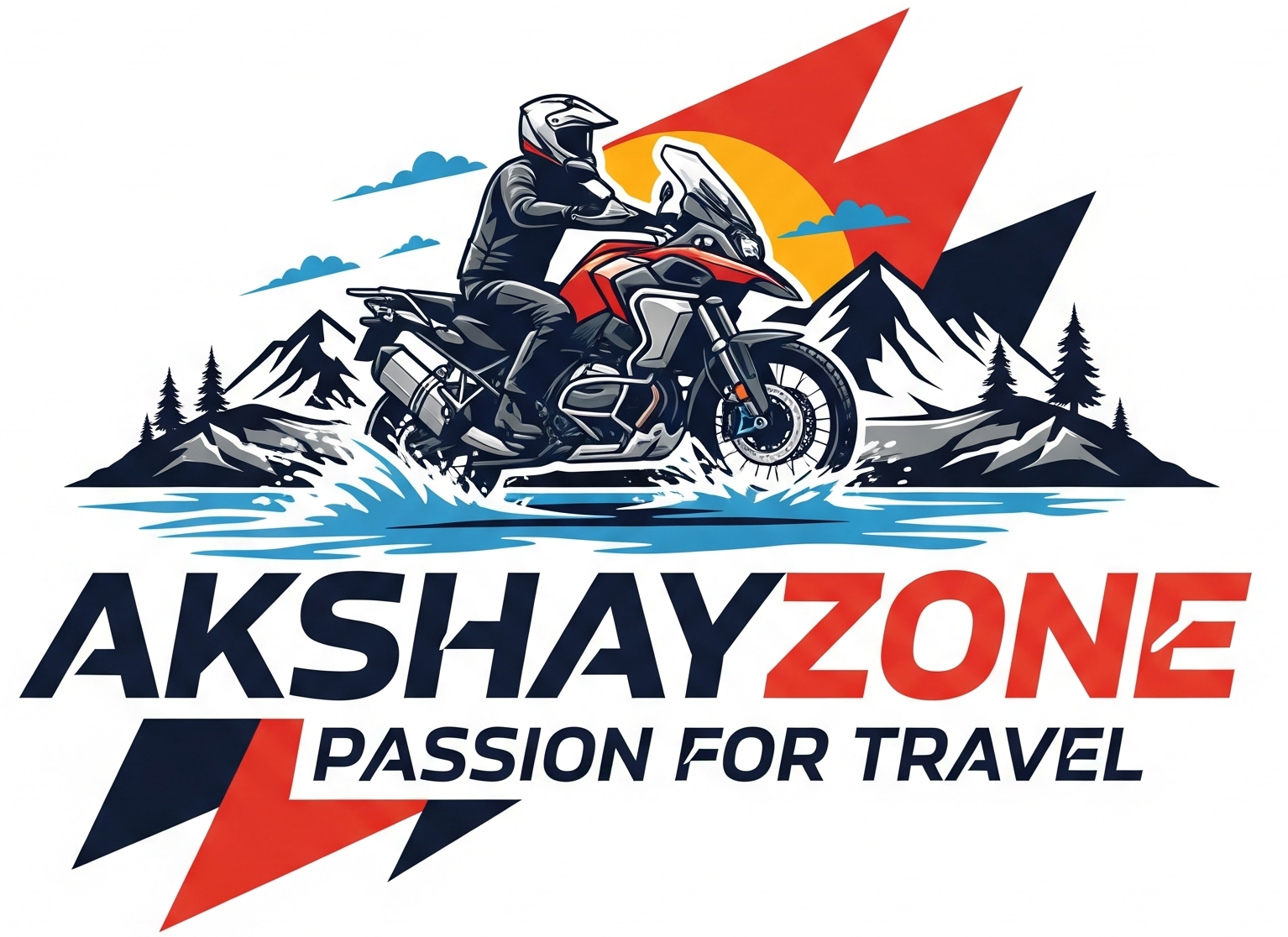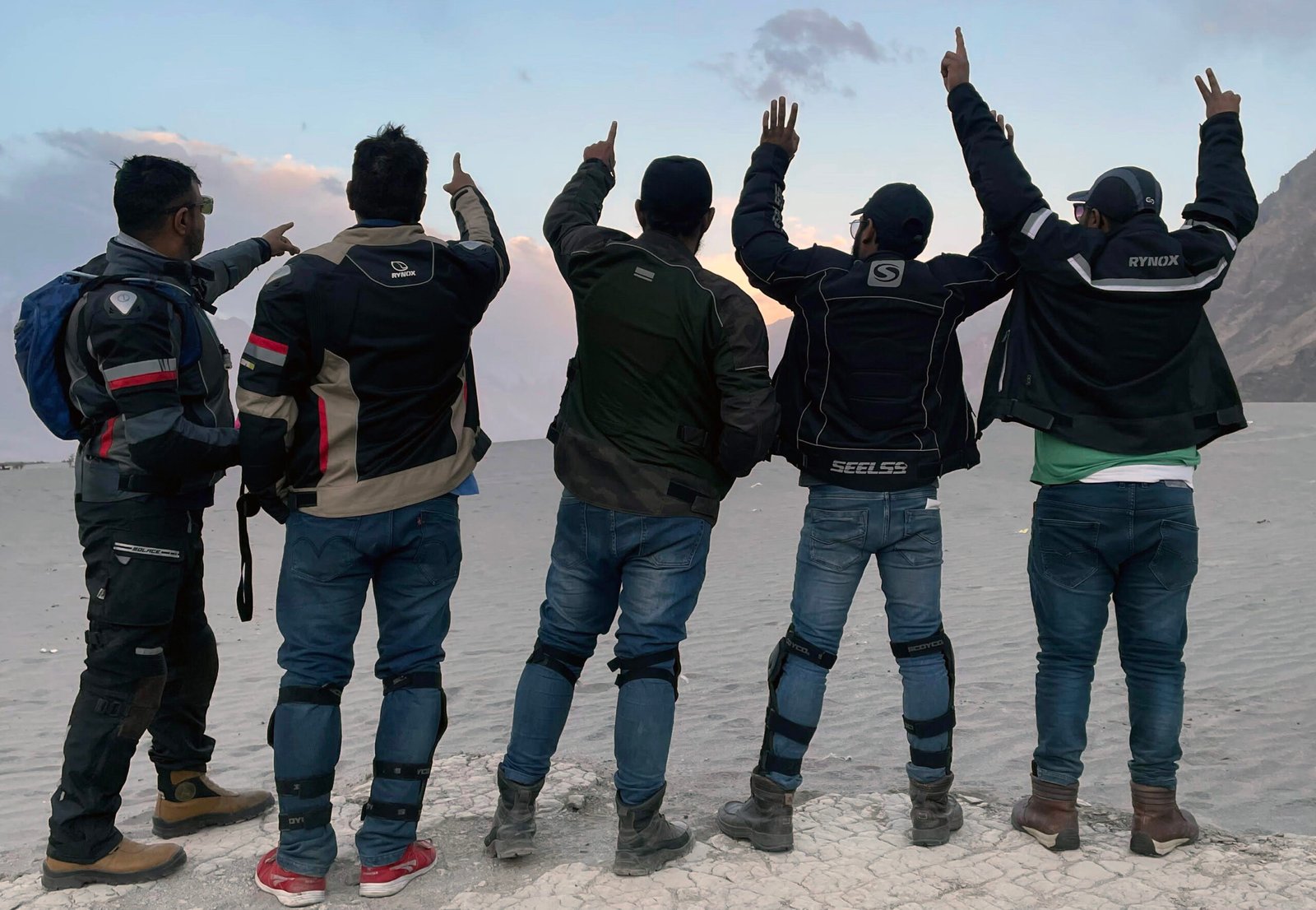
Ride Together, Ride Better: Mastering the Art of Synchronized Touring
Group riding is an incredible experience—camaraderie, shared routes, and the thrill of moving in formation. But it also demands discipline, coordination, and communication. As a beginner, understanding and respecting group riding etiquette not only ensures your safety but also enhances the experience for everyone around you.
Here’s your go-to guide for mastering group riding etiquette.
1. Understand the Formation Basics
Use the Staggered Formation (Ideal for highways & clear roads)
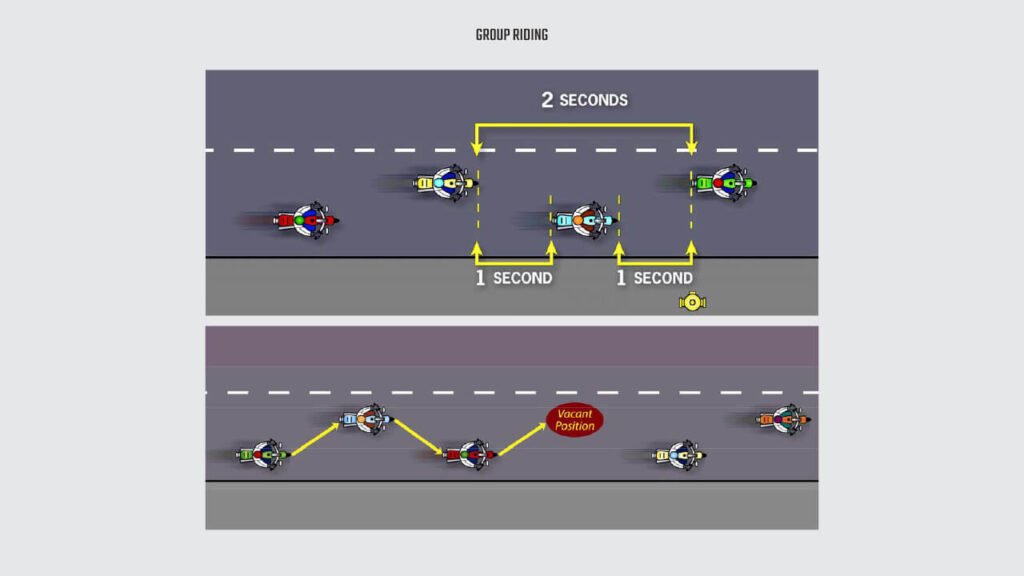
- The lead rider takes the left lane position.
- The next rider stays a few meters behind in the right lane position.
- This continues in an alternating pattern.
Why it works:
- Increases visibility
- Allows safe braking space
- Prevents riding too close to one another
Avoid side-by-side riding—it restricts your escape path in emergencies.
Use Single File on:
- Narrow roads
- Off-road trails
- Steep climbs/descents
- Heavy traffic zones
This ensures tighter control and maneuverability.
2. Know Your Role in the Group
- Lead Rider (Captain): Navigates and sets the pace. Must be experienced.
- Marshal: Ensuring safety and order during the ride
- Sweeper (Tail Gunner): Last rider ensures no one is left behind.
- Middle Riders: Maintain formation and signal if anyone needs help.
If you’re a beginner:
Avoid lead or sweep roles until you gain confidence.
3. Maintain a Consistent Pace
- Don’t constantly speed up or slow down—it disturbs the rhythm.
- Follow the group’s average pace unless you’re instructed otherwise.
- If you fall behind, don’t panic. Ride safe and rejoin steadily.
Never try to “catch up” by speeding unsafely.
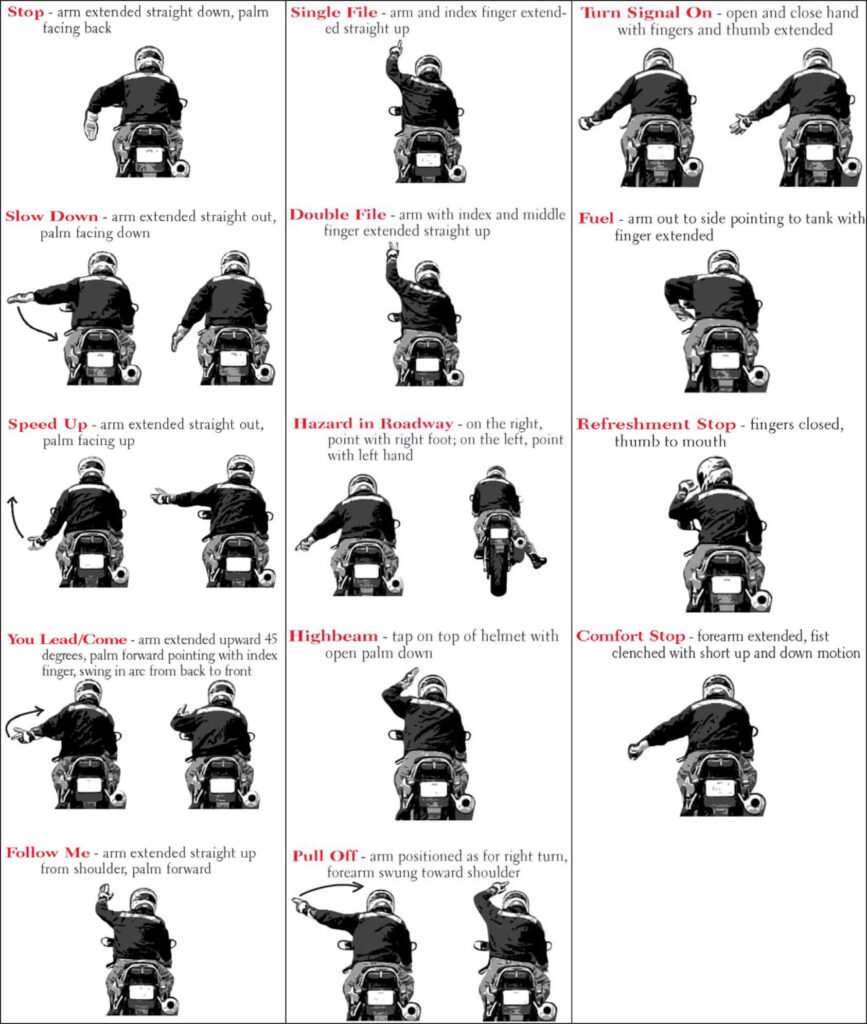
4. Use Hand Signals Clearly
Learn basic group hand signals like:
- ✋ Palm up: Slow down
- ✊ Fist raised: Stop
- ✋ Pointing to tank: Fuel needed
- 👆 Two fingers in air: Formation change
- ✋ Waving behind: Hazard ahead
Tip: The lead rider should brief everyone before the ride.
5. Pre-Ride Briefing is a Must
Before every group ride:
- Share the route, stops, and hand signals
- Exchange emergency contact numbers
- Assign roles (lead, sweep, mechanic if any)
This prevents confusion and fosters teamwork.
6. Keep Communication Open
Use:
- Bluetooth intercoms for real-time coordination
- Group WhatsApp or Zello app for location and updates
- Walkie talkies (for support vehicles or large groups)
But always prioritize visual signals over tech while riding.
7. Don’t Be a Lone Wolf in a Group
Riding your own way in a group is dangerous. Avoid:
- Overtaking within formation
- Leaving the group without informing
- Weaving in and out of positions
- Aggressive revving or stunts
Group rides demand unity, not ego.
8. Don’t Crowd the Rider Ahead
Maintain at least a 2-second gap in staggered formation, more if it’s wet or dusty.
Tailgating reduces your reaction time and increases the risk of chain collisions.
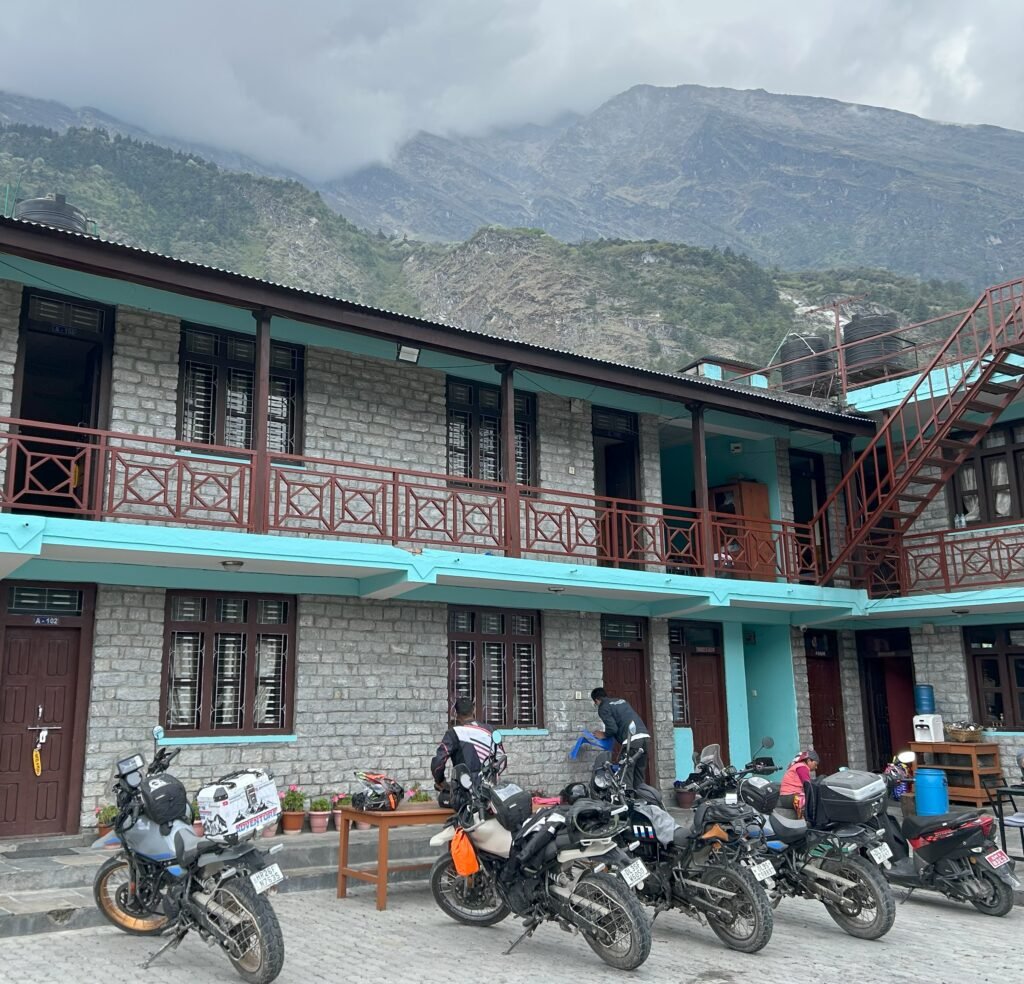
9. Fuel Up Together, Rest Together
Don’t break group momentum by making unannounced stops. Agree on:
- Fuel stops
- Meal/rest points
- Scenic/photo breaks
This avoids delays and miscommunication.
10. Respect Every Rider’s Skill Level
- If a new rider is slow, let them ride in the middle, not the end.
- Don’t pressure others to speed up or take risky detours.
- Encourage, guide, and support each other.
Remember, a group ride is as strong as its slowest rider.
Bonus Tips:
- Keep your headlights on low beam—don’t blind the rider ahead.
- Always check your mirrors—not just for traffic but for group members.
- Hydrate often—especially in summer or mountain rides.
- Avoid loud music or distractions in your helmet.
Final Words
Group riding is more than just hitting the road together—it’s a team sport. It thrives on communication, respect, and rhythm. As a beginner, adopting good etiquette not only keeps you and others safe but also earns you credibility within the riding community.
So gear up, sync up, and enjoy the brotherhood (or sisterhood) of the ride.
